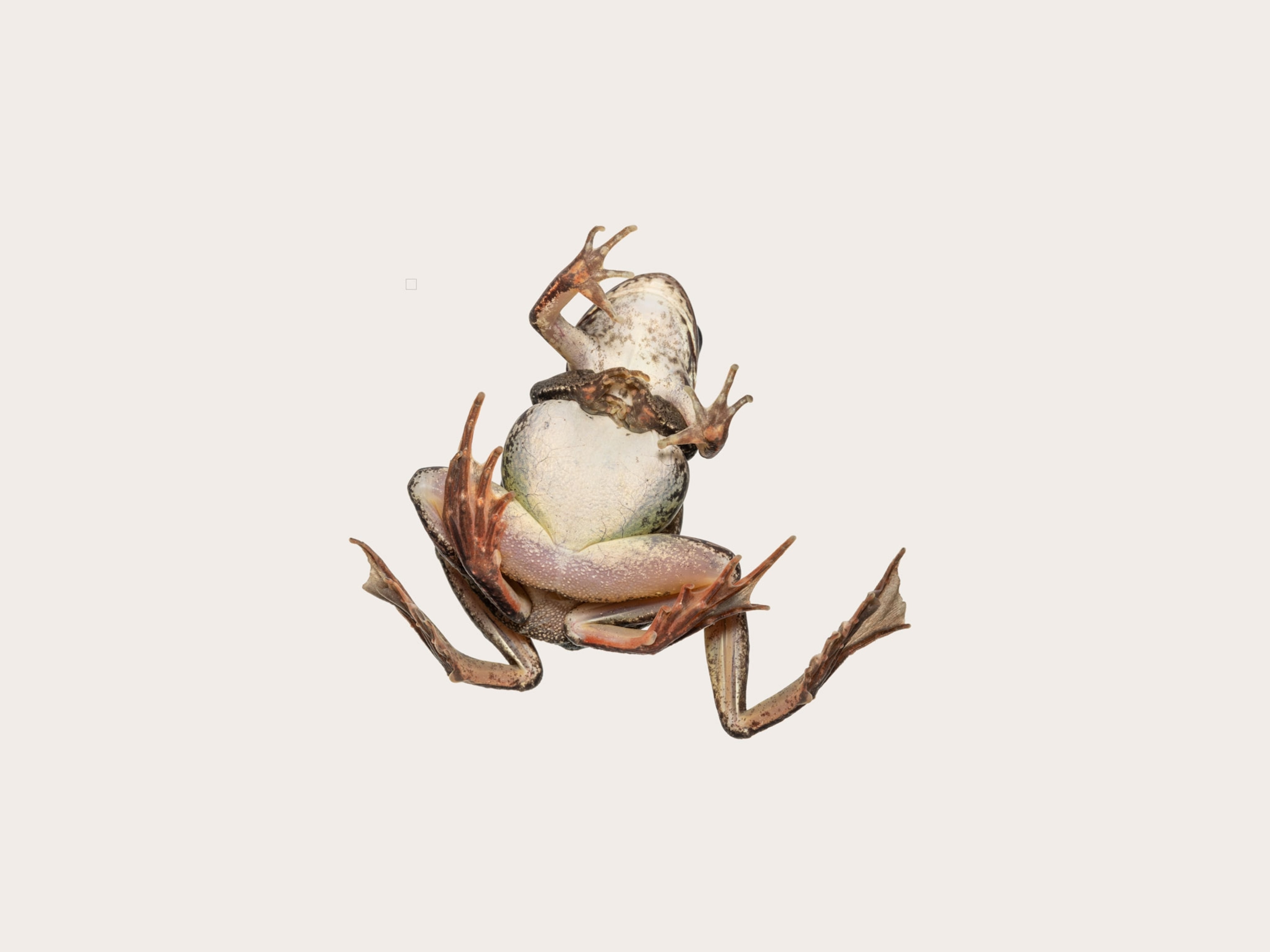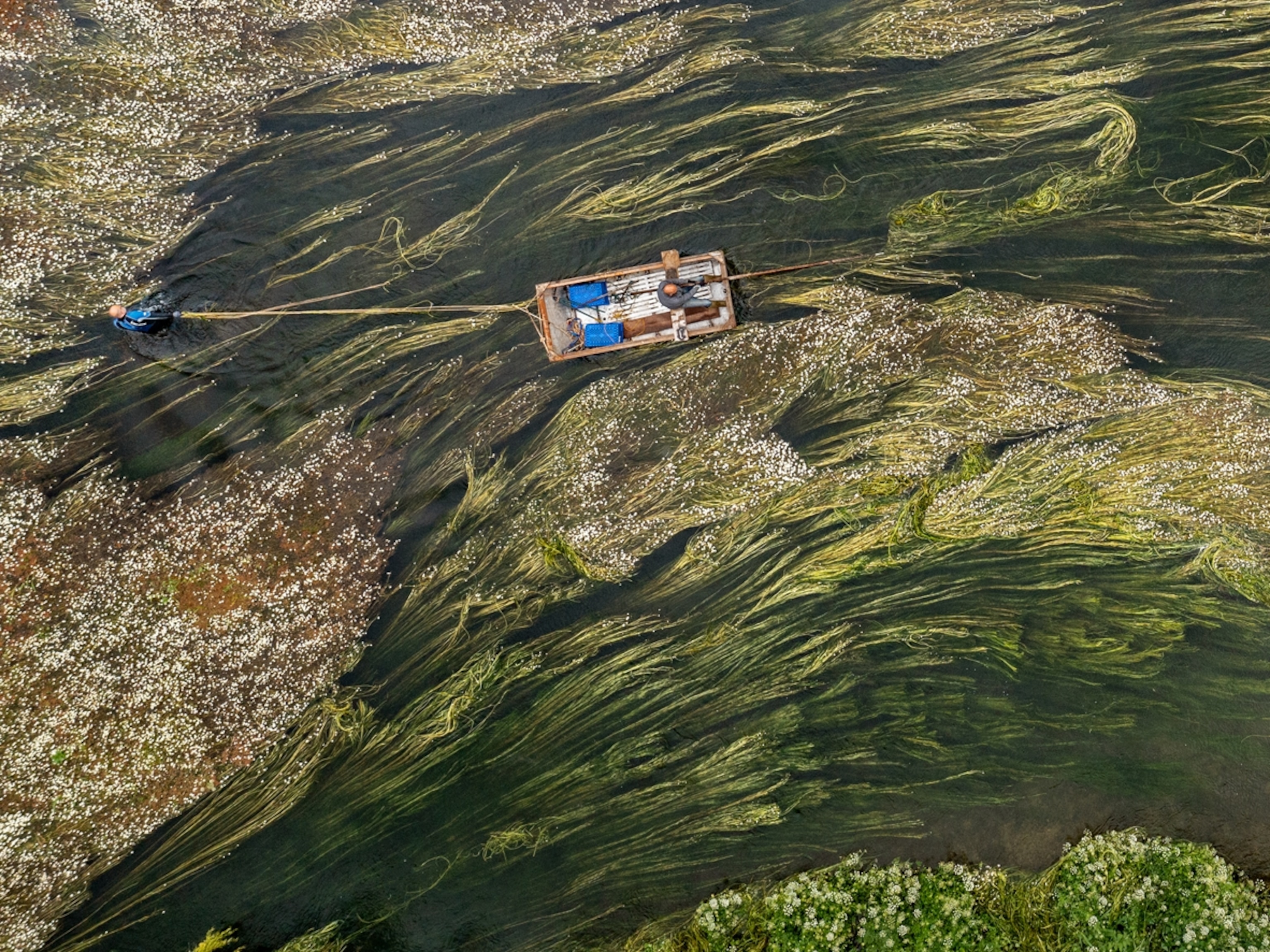
We thought we knew turtles. A new discovery raises a mystery.
This newfound behavior may offer a clue to how these reptiles will respond to a warming planet.
On a warm spring night in the coastal city of Townsville, Australia, two scientists settled into a canoe on the Ross River. Cameras in their laps and binoculars in hand, they made their way through the water.
Before long, they noticed something odd: Krefft’s river turtles basking in the moonlight, just as they do during the day.
"I didn't really think much of it at the time," says Eric Nordberg, an ecologist at the University of New England in Australia. "You very rarely these days get to discover something that nobody else has seen."
But when they asked around after that evening in 2017, they found that other scientists hadn't heard of turtles basking at night, and there were no studies on the behavior.
Nordberg and La Trobe University biologist Don McKnight took it upon themselves to fill this knowledge gap. (See 17 cute pictures of turtles from National Geographic’s Photo Ark.)
Now, six years on, their chance encounter has led to a new paper in Global Ecology and Conservation, which shows that not only do turtles around the world exhibit this behavior, but it could help them understand how the threatened reptiles will react to a warming world.

A worldwide phenomenon
As ectotherms, or cold-blooded animals, freshwater turtles can’t control their body temperature, which is why they rest on stationary objects just outside the water, such as rocks and logs, to warm themselves up in the sun.
To find out if the night-basking Townsville turtles were an anomaly, Nordberg and McKnight designed a global survey. In 2019, the pair put out an international call for collaborators to observe nocturnal basking and share their data. Despite interruptions due to COVID-19, the study was fruitful: Researchers in North America, the Caribbean, Europe, Asia, Africa, the Seychelles, and Australia collected nearly 900,000 photos of 29 different species representing seven out of 11 freshwater turtle families.
Thirteen of those species, across six families, were spotted basking at night. What's more, those turtles tended to bask at night longer than they did during the day.
"It seems like it actually is a thing that's pretty widespread in turtles, and just hasn't been reported before," said McKnight, "which is pretty cool."
The study also found variation between species: Some basked at night more regularly than others; fittingly, the most reliable nocturnal baskers were the Townsville turtles.
Why bask in the moonlight?
The next challenge was figuring out why. The pair’s research ruled out factors such as moon phase, winds, and leeches. McKnight and Nordberg also saw turtles basking near crocodiles and even on top of them, eliminating the hypothesis that nocturnal basking provides distance from predators.
In the global study, only turtles in tropical and subtropical areas basked at night, and the phenomenon was more common closer to the Equator—possibly a clue that controlling body temperature played a role. (Learn more about Earth’s freshwater species—and their struggles.)
Rosie Kidman decided to study the thermoregulation theory as an honors student at James Cook University. "I was just really curious, and it sucked me in," she says.
Kidman captured 25 Krefft’s river turtles from Ross River and took them into a lab environment, where she controlled the water and air temperature and daylight. There, she observed how they behaved when the water temperature was higher or lower than their preference.
While Kidman thought that the reptiles would avoid both high and low water temperatures, she found that turtles basked more during the day and night when the water was hotter than usual. This suggests that, at least in Krefft’s river turtles, nocturnal basking lets turtles cool off when water is warm. (Moonlight, which is weak reflected sunlight, carries no heat.)
"It's pretty cool, because it's the opposite of what they do during the day," McKnight says.
Turtles on the edge
Studying nocturnal basking could inform our understanding of how turtles respond as Earth warms due to climate change. Global temperatures are projected to rise by about 2.7 degrees Fahrenheit by 2030.
This is also relevant as Kidman’s research suggests freshwater turtles avoid heat more than previously thought, possibly due to the high costs of being too warm. A recent study predicted that temperature increases due to climate change, particularly heatwaves, will kill outright many heat-sensitive ectotherms, such as turtles.
"Now we have a baseline," Kidman says. "When we want to study these animals in the future, we can monitor how they're changing their behavior."
This will be especially important for turtles, as around 60 percent of freshwater turtle or tortoise species are threatened or extinct, due to factors such as poaching, diseases, and habitat loss, according to the International Union for Conservation of Nature. (Read about the decline of Earth’s largest freshwater turtle.)
The discovery is also a humbling reminder, McKnight adds.
"It really just shows how important it is to keep studying even species we think we know pretty well."





